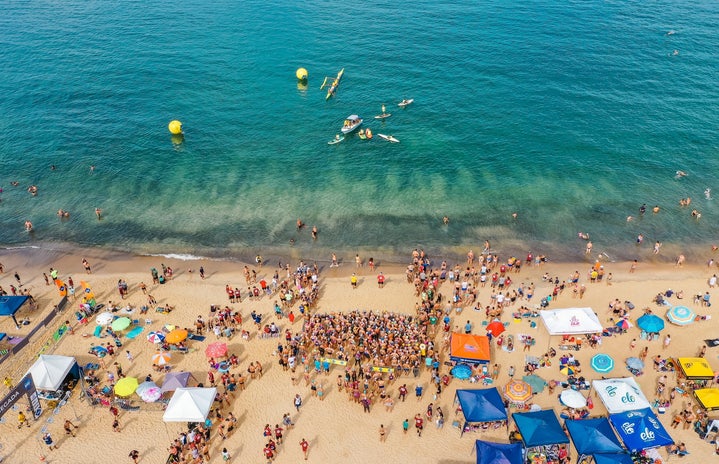Spring break is quickly approaching. Throughout the country, thousands of college students are taking trips to the beach with their friends to soak up the sunshine and prepare to make it through those last couple weeks of the school year. When on the beach, trash might get left or accidentally get sucked into the ocean. But hey, it’s not a big deal, right? “It’s just a couple pieces of trash that I did not throw away. It’s just one plastic bag.”
Wrong.
The trash being left on beaches and sucked up into the ocean has accumulated over the years and created what is called The Great Pacific Garbage Patch or Pacific Trash Vortex. The Great Pacific Garbage Patch is a HUGE pile of trash in the Pacific Ocean that has collected over time from litter on beaches. There is a system of four rotating currents in the ocean, called the North Pacific Gyre, which carries littered trash from all parts of the world to this one spot in the Pacific Ocean. In between the currents, the water is dormant which therefore causes trash to get stuck in this area and begin to pile up. Within this garbage patch, the trash can be hard to see from above because it has been broken down into tiny pieces or has sunk. However, just because it is not visible from above does not mean that it is “out of sight out of mind” and not a problem. According to National Geographic, about 80% of the trash is from the land and our lack of attention to doing a simple task such as throwing away garbage. This has led to marine life dying. Our actions do have consequences.
Marine life is getting extremely harmed by the litter. Loggerhead sea turtles are eating plastic bags and mistaking them for their favorite snack, a jellyfish. Marine life is swallowing plastic and their organs are rupturing. Whales and seals are are getting caught in trash and starving to death or drowning. The plastic at the top of the ocean is blocking the sun from getting in which in result effects the algae and plankton which are at the bottom of the food chain of marine life. So many animals are being effected. If the animals and organisms at the bottom of the food chain are unable to survive and thrive then the whole community or ecosystem will suffer. When marine life suffers, then the sea food will decrease in availability and increase in price. As you can see, it is a chain reaction. Our decision to not throw out our trash comes back to affect us.
This problem is 100% within our control. We are the problem and we are the solution. Now I know you might think, “well how will just I as one person make a difference?” Let me tell you. Maybe that plastic bag you chose to throw away instead of leave on the beach will be the difference between life and death of a sea turtle. That could have been the plastic bag the turtle ate but because you chose to throw it away you saved a sea turtle’s life. You will inspire others to do the same and it will in case save more animals. The poor marine life are suffering from our doing. We can make a change. Let it start with you. Be aware. Be considerate.
On your venture out to the beach this spring break or over the summer, please be mindful of your trash and encourage others to as well. Throw your trash in a garbage can. Let’s save our animals and our planet. Let’s keep our beaches clean! The turtles and marine life will thank you!

